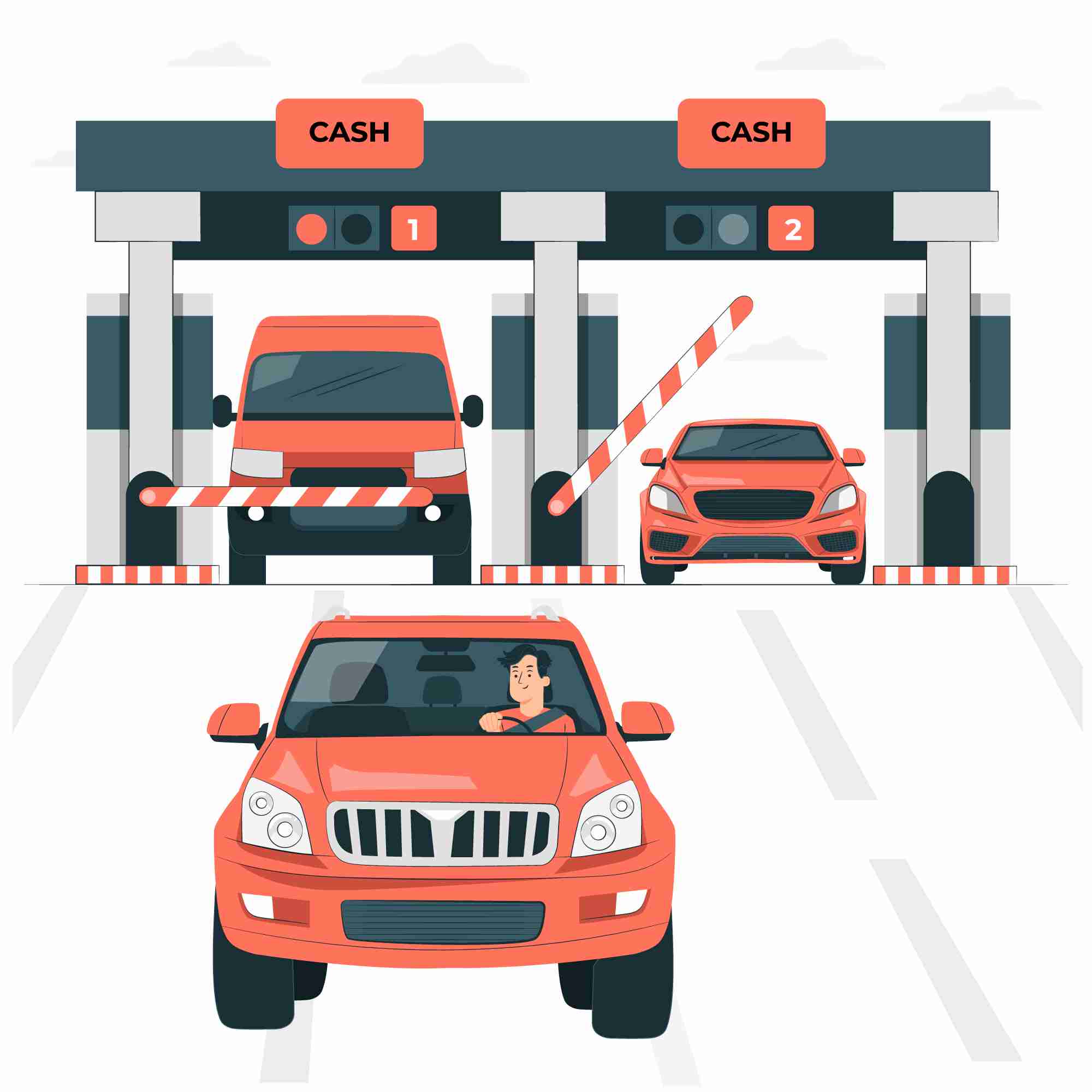One of the standout solutions in this space is FASTag, managed by the National Highway Authority of India (NHAI). FASTag leverages advanced Radio Frequency Identification (RFID) technology to facilitate seamless toll payments without requiring vehicles to stop or queue at toll plazas.
Mounted on the windscreen of vehicles, FASTag operates by automatically scanning the RFID tag as the vehicle approaches the toll booth. Payments are then processed directly from the vehicle's linked account—be it a current, savings, or prepaid account—ensuring a swift and convenient transaction.
Since FASTag became mandatory across India on December 15, 2019, the system has seen substantial adoption, with approximately 80 million FASTags issued to date. Each FASTag is equipped with tamper-proof technology, assigned a unique identifier, and securely affixed to the windscreen of each vehicle. Notably, the adoption rate is exceptionally high, reaching 98.9%, reflecting the effectiveness and efficiency of this electronic toll collection system.
FASTag is a significant advancement in toll collection, delivering both time and cost savings while enhancing the overall efficiency of road travel.
Here’s how these innovative RFID UHF tags are transforming the tolling experience.
What Are RFID Windshield Tags?
RFID (Radio Frequency Identification) windshield tags are small, passive UHF RFID tags that use radio waves to communicate with RFID readers. Mounted on a vehicle’s windshield, these tags store and transmit unique vehicle information like VRN, User Bank details, etc to automate toll collection systems. Unlike traditional toll collection methods, RFID tags enable quick, easy & error-free contactless transactions, streamlining the tolling process.
Time Savings for Commuters
One of the most significant advantages of IDT RFID UHF windshield tags is the reduction in wait times at toll booths. With RFID technology, vehicles equipped with tags can pass through toll lanes without stopping or slowing down. The IDT RFID reader, specifically made for tolls with LED & Buzzer indication and the capability to read all 3 memory banks simultaneously for fast and easy transactions, scans the tag as the vehicle approaches, automatically processing the toll charge. This contactless approach eliminates the need for manual payment and change handling, allowing for a smoother and faster flow of traffic. As a result, commuters experience less frustration and spend less time waiting in line.

Cost Efficiency for Toll Operators
For toll operators, IDT RFID UHF windshield tags offer substantial cost savings. The automation of toll collection reduces the need for physical toll booths and cash-handling infrastructure, leading to lower operational costs. Additionally, RFID systems minimize human error associated with manual transactions, reducing the risk of revenue loss due to inaccuracies. With fewer physical toll booths required, toll operators can allocate resources more efficiently and focus on maintaining and upgrading their infrastructure.
For toll operators, IDT RFID UHF windshield tags offer substantial cost savings. The automation of toll collection reduces the need for physical toll booths and cash-handling infrastructure, leading to lower operational costs. Additionally, RFID systems minimize human error associated with manual transactions, reducing the risk of revenue loss due to inaccuracies. With fewer physical toll booths required, toll operators can allocate resources more efficiently and focus on maintaining and upgrading their infrastructure.
Enhanced Traffic Management
RFID technology also contributes to better traffic management. By providing real-time data on vehicle flow and toll collection, operators can analyze traffic patterns and make informed decisions to optimize toll lane usage and reduce congestion. The efficiency gained from RFID tags helps in managing high traffic volumes more effectively, leading to smoother and more predictable travel experiences for everyone on the road.
In conclusion, RFID windshield tags, particularly through FASTag, transform the toll collection landscape by providing a more streamlined, efficient, and cost-effective solution. For commuters, FASTag ensures a smoother, hassle-free journey by eliminating the need to stop and queue at toll plazas, thus reducing travel time and enhancing convenience. For toll operators, FASTag leads to lower operational costs and better traffic management, resulting in more efficient processing and reduced congestion. As the adoption of FASTag and similar RFID technologies continues to rise, the future of toll collection promises to be increasingly efficient and user-friendly, offering significant time and cost savings for everyone involved.



